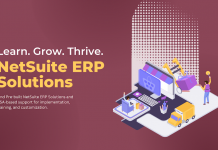There are a variety of methods that can be used to improve business efficiency. The most effective methods will vary from business to business, so it is important to tailor the approach to fit the specific needs of the company. However, some general tips that can help improve business efficiency include streamlining processes, optimizing workflows, and using technology to automate tasks.
Streamlining processes is one of the most effective ways to improve business efficiency. This involves identifying and eliminating any steps or procedures that are not necessary or that add delays or complexity to tasks. Optimizing workflows can also help improve efficiency by ensuring that tasks are completed in a logical and efficient order. Using technology to automate tasks can also helpful in improving efficiency. Automating tasks can help speed up processes and eliminate the need for manual input, which can save time and reduce errors.
While the most effective methods for improving business efficiency will vary from business to business, these are some general tips that can help get started. By tailoring the approach to fit the specific needs of the company, businesses can improve their efficiency and optimize their operations.
Today, more and more companies are realizing that their major competitors will always be other businesses from their own industry. Therefore, the success of any company largely depends on how efficient it is as a business entity. In order to achieve this level of efficiency, many corporations have been implementing business intelligence techniques which also include using data warehousing solutions for collecting and processing information from different aspects of a company’s operation. However, not all BI applications are successful, because some companies fail to follow a systematic approach when implementing them in their organization.
There are several factors that need to be considered before deploying BI software within an organization: Saivian
1) Identify your company’s Business Intelligence Requirements.
It is necessary to establish clearly-defined objectives with regards to what data is to be collected, how it is to be used and what are the desired end-results that you want to achieve.
2) Adopt a phased approach when implementing BI systems
3) Involve all levels of management early on in the process.
4) Select an appropriate data warehousing solution for your company
5) Define clearly which information will need to be available on demand
6) Identify possible sources of data
Ensure that everyone within the organization understands how they can benefit from BI
7) Plan for future expansions of your business intelligence system
8) Manage expectations correctly
9) Before implementing any BI program, ensure that the business processes have been adjusted in order for them to incorporate the new system.
10) Ensure that you have the appropriate technical and statistical support required for your business intelligence solution to succeed
11) If necessary, involve someone with a strong knowledge of statistics and data analysis in order for them to help adjust and optimize the BI application.
At the end of this article is a checklist which summarizes all these points.
Here are some FAQs recently asked by people about business intelligence:
Q1) What are some of the benefits that can be achieved through the implementation of a BI system?
A1) The benefits that can be achieved through the implementation of a BI system depend on the specific requirements of each company. However, some of the most common benefits include increased efficiency, improved decision-making, better strategic planning, enhanced customer service and increased profitability.
Q2) Why is it important to involve all levels of management in the process of deploying a BI system?
A2) It is important to involve all levels of management in the process of deploying a BI system because they will be responsible for using and benefiting from the new system. By getting input and approval from all levels of management, you can ensure that the system will be used effectively and meet the needs of everyone within the company.
Q3) How do I know which data warehousing solution is right for my company?
A3) The best way to determine which data warehousing solution is right for your company is to consider your specific requirements and then find a vendor that offers a product that meets those needs. It is also important to make sure that the vendor has a good reputation and provides adequate technical support.
Q4) What if I don’t have any experience with business intelligence or data warehousing?
A4) If you don’t have any experience with business intelligence or warehousing, it may be necessary to hire someone who can help technology staff technology staff implement your BI system or assist in making modifications to an existing system.
Q5) What is the best way to determine which information will need to be available on demand?
A5) The best way to determine which information will need to be available on demand is for business analysts and IT professionals to work together in order identify the data that must be readily accessible in order for their specific departments or roles within the organization to function effectively.
Conclusion:
Adopting a business intelligence solution can help your company reach its long-term goals faster and more efficiently. However, it is important to carefully plan out the specifics of your system before implementing it within your organization. Saivian Suggested by following these 11 guidelines, you should be able to achieve success with BI.











